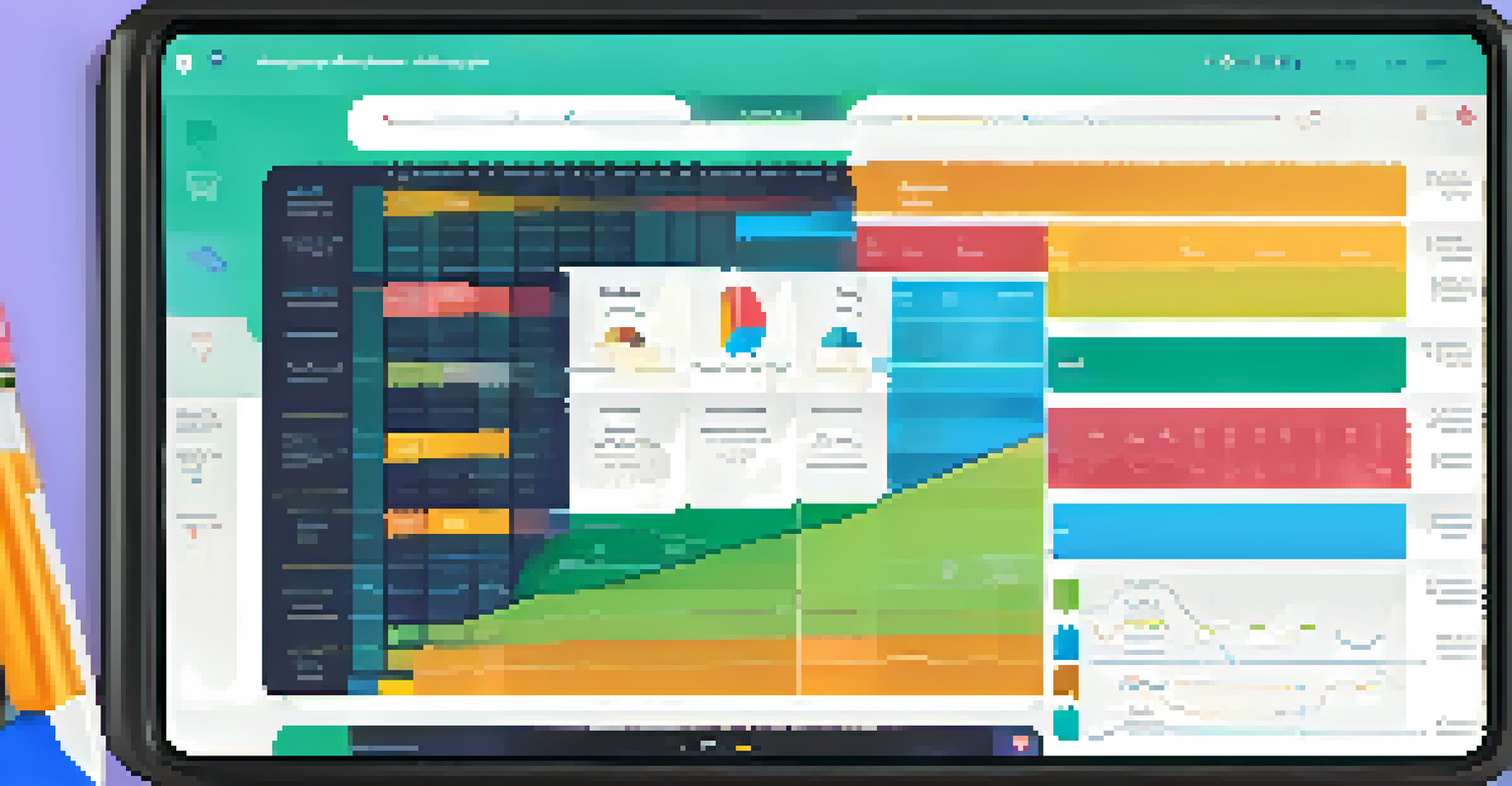The Role of AI in Supporting Non-Traditional Learning Methods

Understanding Non-Traditional Learning Methods
Non-traditional learning methods encompass various approaches that differ from the conventional classroom setting. These can include online courses, workshops, and self-directed learning. As education evolves, these methods have gained popularity due to their flexibility and accessibility.
Education is not the filling of a pail, but the lighting of a fire.
For many learners, non-traditional methods provide the opportunity to tailor their education to fit personal schedules and learning preferences. This is particularly appealing to adult learners balancing work and family commitments. By moving away from a one-size-fits-all model, education becomes more inclusive.
However, these methods also present challenges, such as the need for motivation and self-discipline. This is where artificial intelligence (AI) steps in to support learners and enhance their educational experiences.
AI as a Personalized Learning Companion
One of the most exciting aspects of AI in education is its ability to create personalized learning experiences. AI algorithms can analyze a learner’s strengths, weaknesses, and preferences, adjusting content and pacing accordingly. This means that each learner can have a unique educational journey tailored just for them.

For example, platforms like Khan Academy use AI to recommend resources based on a student's past performance. If a student struggles with a particular math concept, the system can suggest targeted exercises to help them improve. This level of personalization helps keep learners engaged and motivated.
AI Personalizes Learning Experiences
AI tailors educational content to individual strengths and preferences, enhancing engagement and motivation.
Ultimately, AI acts as a supportive partner, guiding students through their learning paths and ensuring they receive the help they need when they need it.
Enhancing Engagement Through Interactive Tools
AI technologies are revolutionizing engagement in non-traditional learning environments through interactive tools. These include chatbots, virtual reality (VR), and gamified learning experiences that make education fun and immersive. Such tools captivate learners and encourage active participation.
The future of education is not just in the classroom, it's in every experience that we create for learners.
Imagine a student learning history through a VR simulation that places them in a significant historical event. This immersive experience can make the subject matter more relatable and memorable. It’s a great example of how AI can transform abstract concepts into engaging realities.
By incorporating these interactive elements, learners are more likely to stay focused and retain information, which is essential for effective learning.
Fostering Collaboration in Remote Learning
Collaboration is a vital component of effective learning, and AI facilitates this in non-traditional settings. Through AI-driven platforms, learners can easily connect with peers and educators, regardless of their geographical location. This fosters a sense of community and shared learning experiences.
For instance, tools like Microsoft Teams and Slack incorporate AI features that enhance group communication and project management. These platforms can suggest optimal times for meetings or help organize tasks based on team member availability. Such functionalities make collaboration smoother and more efficient.
Interactive Tools Boost Engagement
AI-driven interactive tools like VR and gamification make learning more immersive and enjoyable.
This sense of connection is crucial, especially in remote learning environments where students might otherwise feel isolated.
Supporting Diverse Learning Needs with AI
AI is instrumental in catering to diverse learning needs, ensuring that all learners receive the support they require. Whether it’s providing resources for students with learning disabilities or offering advanced materials for gifted learners, AI can adapt to a wide range of requirements. This inclusivity is essential in today’s educational landscape.
For example, AI-driven platforms can offer text-to-speech features for students who struggle with reading or suggest alternative formats for learning materials. By meeting learners where they are, AI helps to bridge the gap between different educational backgrounds and capabilities.
This adaptability not only enhances learning outcomes but also empowers every student to reach their full potential.
AI in Assessment and Feedback Mechanisms
Assessment is key to understanding student progress, and AI can streamline this process significantly. Through automated grading systems and analytics, educators can receive real-time insights into student performance. This allows for timely interventions and support where needed.
For instance, AI tools can analyze quiz results and identify common areas where students are struggling. By providing immediate feedback, learners can understand their mistakes and learn from them without delay. This fosters a growth mindset and encourages continuous improvement.
Ethical Considerations in AI Use
Addressing data privacy and algorithmic bias is essential to ensure equitable AI applications in education.
Overall, AI enhances the assessment process, making it more efficient and responsive to individual learning needs.
Challenges and Ethical Considerations in AI Learning
While the benefits of AI in non-traditional learning are clear, there are challenges and ethical considerations to address. Issues such as data privacy, algorithmic bias, and accessibility must be carefully navigated to ensure that AI serves all learners equitably. It’s crucial that stakeholders prioritize ethical standards in the development and application of these technologies.
For example, educational institutions must be transparent about how they collect and use students' data. This fosters trust and ensures that all learners feel secure in their educational environments. Additionally, it’s essential to involve diverse voices in the design of AI systems to mitigate biases and promote inclusivity.

By addressing these challenges head-on, we can harness the full potential of AI in education while safeguarding the interests of all learners.